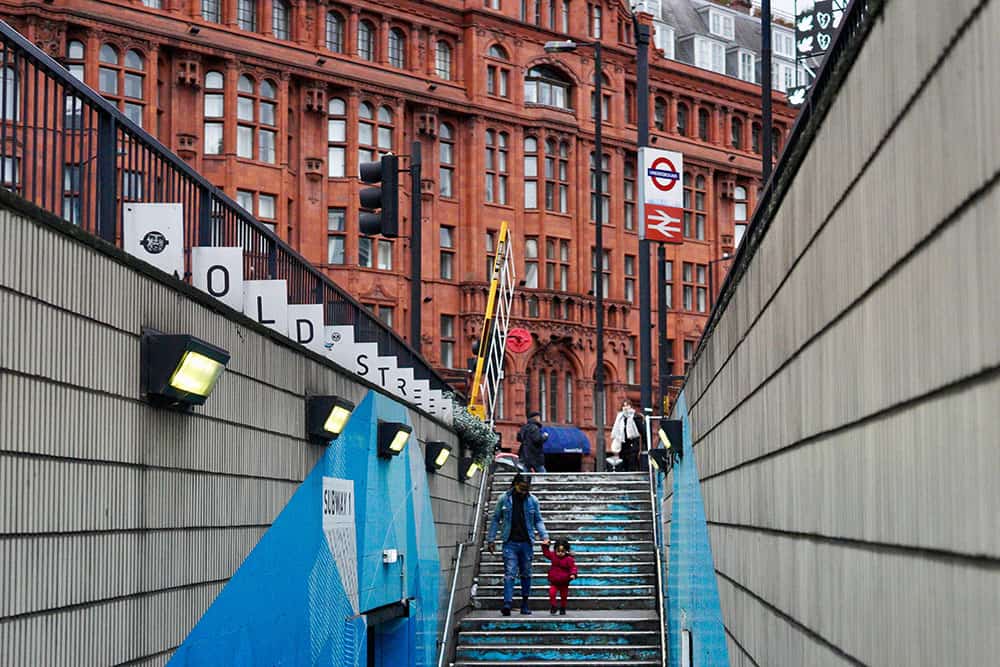New travel experiment reveals dire London commutes for wheelchair users

A new experiment has revealed that London wheelchair users’ commutes take a shocking 49 percent longer than an able-bodied person’s on average.
The ‘Going the Extra Mile’ experiment enlisted the help of five wheelchair users who tested five popular commuter journeys in London. The study pitted wheelchair users and able-bodied commuters against each other, with each starting their journey from the same point, at the same time and finishing at the same destination.
The experiment was carried out in an effort to raise awareness of accessibility issues on public transport.
Longer commutes and restricted access to London’s transport network
With only 77 out of 270 stations fully accessible for wheelchair users, London’s transport options are often very limited for people with disabilities, making their journeys longer and filled with challenges.
The five commuter journeys carried out during the course of the experiment took wheelchair users a combined total of three hours and five minutes to complete – just under 50 percent longer than able-bodied participants.
A simple nine-minute commute from Liverpool Street to Kings Cross took an astounding 32 minutes for the wheelchair user, whose only option was taking a single bus route – bus 205 – between the two central London stations, due to the lack of accessibility of the underground.
Wembley Park to Westminster, another popular commute route, took 83 percent longer than what the ‘step-free access’ option on the TFL journey planner estimated for wheelchair users.
Jennifer, who tested the Wembley Park to Westminster route, avoids public transport altogether in her daily life: “Today was the first time I’d used public transport since [getting injured]. I probably won’t use it again.”
Despite living close to five underground stations, Karl, another participant, revealed he is limited to using buses 90 percent of the time. Travelling from Victoria to Oxford Circus – a journey that can take a mere four minutes for an able-bodied person – took Karl 73 percent longer because he had to use a bus route instead.
Planning the journey: a challenge in itself
Throughout the travel experiment, wheelchair users flagged the difficulty of planning their public transport journey as a recurrent problem. Cross-checking several different apps seems to be the norm, although participants find most of these unreliable or inaccurate.
They state that, ultimately, their own experience is most reliable: “I usually use Citymapper to plan my journeys,” Karl said, “but I tend not to rely on it.”
Other wheelchair users disclose the meticulous work involved in planning a journey, such as using Google Maps’ satellite function to look at the state of pavements.
Moreover, official apps and tools consistently fail to cater to wheelchair users’ individual needs. For the Westminster bound journey, the TFL journey planner suggested a change at Finchley Road to use the Jubilee line, in a similar manner to the able-bodied passenger.
In reality, staff at the starting point of the journey advised this was not possible, as the gap there would be far too large for an electric wheelchair. It transpired that the route recommended by the journey planner would have only worked for a manual wheelchair user, potentially leaving any electronic wheelchair users stranded had they taken the recommended route.
London commutes are paved with obstacles
Despite carefully planning their journeys for the experiment, wheelchair users still encountered unforeseen obstacles and challenges, some of which they say are a regular occurrence on their commutes on public transport:
- Transport staff are often unprepared to offer assistance. One participant was left waiting on a bus arriving at King’s Cross station, as the driver closed the doors before she could exit using the ramp. She disclosed some bus drivers have difficulty activating the ramp: “It sounds ridiculous, but sometimes the driver might even ask me for guidance on how to activate it!”
- Or lacking altogether… On the Westminster bound journey, Jennifer, the wheelchair user doing the experiment, faced an unexpected challenge, as there was no staff present to assist with setting up a ramp at the destination, despite assurance from the information point that this had been arranged for her. This left Jennifer with only one option: relying on help from a stranger to exit and navigate the station.
- Difficult transfers are another prevalent issue. To get to the London Bridge bus station from the London Bridge underground station, the wheelchair user needed to traverse an entirely uphill transfer. “I’m a very active wheelchair user, but even I was tempted to stop for a minute to catch my breath,” revealed Sau, who took part in the experiment.
These are only a few of the dreadful obstacles wheelchair users face on a regular basis on their London public transport journeys.
The Going the Extra Mile study stresses that these facts must be brought to light in a bid to make public transport more accessible, reliable and pleasant for wheelchair users.

